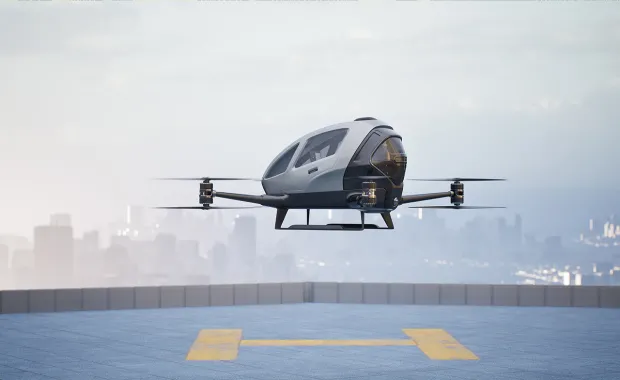Enhancing urban and regional transportation by enabling autonomous aircraft to take off, navigate, and land in complex environments at aviation levels of safety using automotive sensors. Aircraft operations in urban areas must increase beyond current capacity if the economic growth potential resulting from an advanced air mobility (AAM) infrastructure is to be realised.
To create an autonomous flight control system for safe operations in such complex, urban environments, CGI and Continental Engineering Services (CES) studied the feasibility of a situationally aware, hybrid navigation solution. The system is based on ASIL (Automotive Safety Integrity Level)-compliant automotive sensor technology, which are integrated with other sensors, passive ranging of 5G networks and GNSS (Global Navigation Satellite System) receivers.
The work carried out by CGI and CES, and presented herein, demonstrates that this is feasible and economically achievable. The visual and non-visual information required by an autonomous flight control system to become sufficiently aware of its own environment to derive actionable information for flight control inputs can be provided by sensors developed for autonomous driving.
For the full context read our interactive whitepaper.




